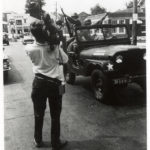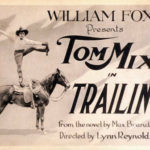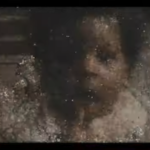Who Is Crazy? Always a Good Question
A 1965 film by a young American in Paris with performances by members of the Living Theater and soundtrack by Ornette Coleman turns up in a New York garage, and is restored to enrich the history of experimental cinema of its day.
n
n
Thanks to an overdue search of the filmmaker’s garage, a rarity from the experimental film ferment of the 1960s was just screened for the first time in almost 50 years, at Anthology Film Archives in New York.
With that, Who’s Crazy, in a restoration by Anthology’s John Klacsmann and distribution by Grand Motel Films, has reemerged as an emblem of its age.
In 1965, Thomas White, then a 33-year-old American living a bohemian life in Montparnasse, made the 73-minute feature in Heist-sur-Mer, Belgium, with a set of collaborators-of-the-moment. Those included members of New York’s Living Theater, playing a bus load of residents of an asylum for the insane, and a soundtrack by the jazz icon Ornette Coleman, who even recorded a cut for the film with singer Marianne Faithfull, then in her late teens and already embarked on a life course whose mayhem the inmates might have recognized.
The rediscovery of the film has made a splash, not only because, as Richard Brody put it in The New Yorker, it “bursts the bonds of movie logic to unleash the primal ecstasy of the cinema,” but also because of its place in the history of truly independent filmmaking of that time. It has, for instance, links to Shirley Clarke’s recently revived 1962 portrayal of jazz-drenched, heroin-riddled junkies, The Connection, which was made from a play mounted by Living Theater co-founders Judith Malina and Julian Beck (both productions had a score by jazz pianist Freddie Redd), while Clarke would retain her interest in the liberationist expression of jazz and particularly Coleman to create, in 1984, for 1986 release, her celebrated portrait, Ornette: Made in America.
 Who’s Crazy had been missing for decades, listed as lost by the Library of Congress. The Ornette Coleman soundtrack had survived, but on a rare double LP recording on Affinity and a 1994 Japanese two-CD reissue. Thomas’s White cannily figured that Coleman was well fitted to contribute to his vision of an insane world that was merely a variant on what passed for sane. Coleman’s thinking emerges in the film, and also in a fascinating 27-minute short, David, Moffett, and Ornette: The Ornette Coleman Trio, that jazz documentarian Dick Fontaine shot (unbeknownst to White). The Fontaine film captures the trio, with bassist David Izenzon and percussionist Charles Moffett, recording a semi-improvised score while taking visual cues from a projection of Who’s Crazy. Coleman moves among alto sax, trumpet, and violin.
Who’s Crazy had been missing for decades, listed as lost by the Library of Congress. The Ornette Coleman soundtrack had survived, but on a rare double LP recording on Affinity and a 1994 Japanese two-CD reissue. Thomas’s White cannily figured that Coleman was well fitted to contribute to his vision of an insane world that was merely a variant on what passed for sane. Coleman’s thinking emerges in the film, and also in a fascinating 27-minute short, David, Moffett, and Ornette: The Ornette Coleman Trio, that jazz documentarian Dick Fontaine shot (unbeknownst to White). The Fontaine film captures the trio, with bassist David Izenzon and percussionist Charles Moffett, recording a semi-improvised score while taking visual cues from a projection of Who’s Crazy. Coleman moves among alto sax, trumpet, and violin.
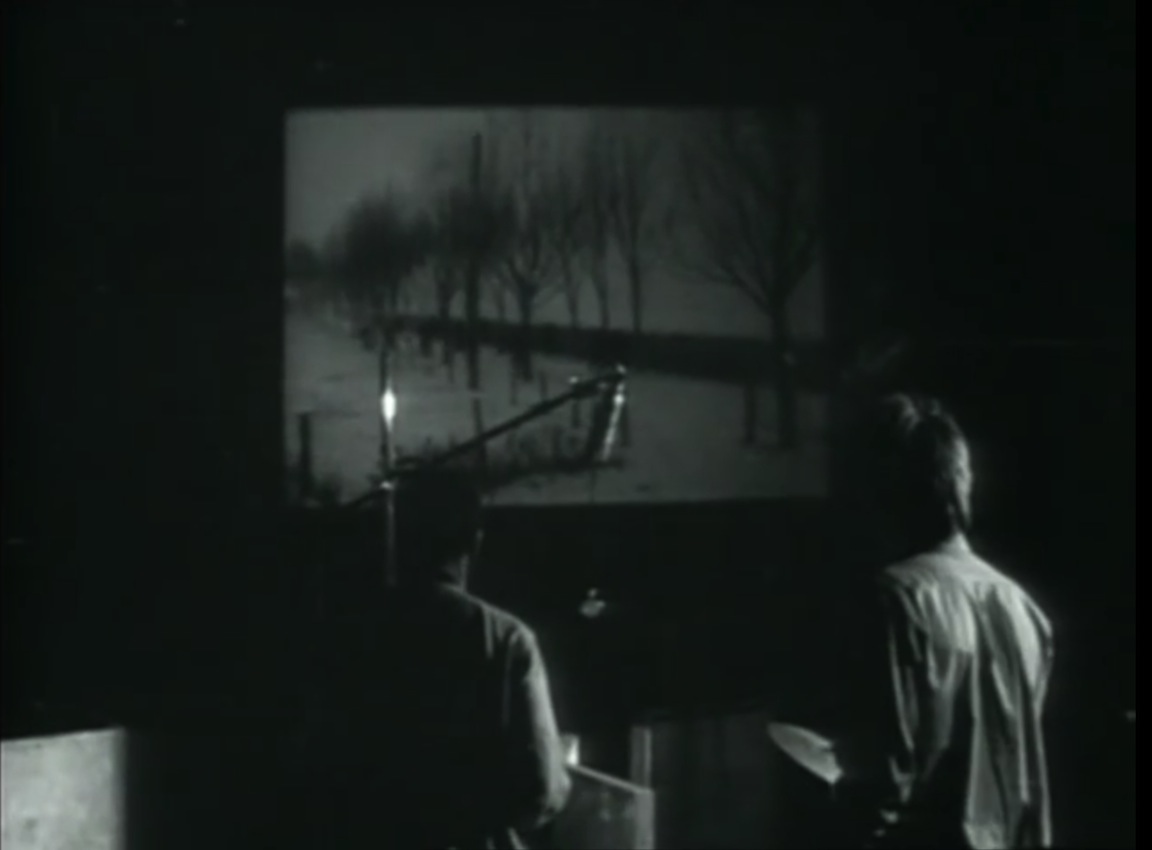
Recording the soundtrack, Ornette Coleman’s trio took cues from the rolling film, as seen in this still from Dick Fontaine’s film document.
Interspersed is testimony from the band members about their visions for musical creation. In one delightful Ornettian inversion, the multi-instrumentalist muses: “To be a man, whatever a man is… There is something that is very important about being a man. And it’s not necessarily your honesty, or your philosophy; but it has more to do with you being able to get away with what you can do and someone else saying, ‘Well that’s him.’”
This was his view, at a time when jazz critics, and most fellow jazz musicians, were venemously hissing, “that cat’s crazy – crazy!”
Never one to back down from cavilling critics, he went so far, in his soundtrack, as to have Marianne Faithfull sing his song, “Sadness,” that included utterances like “Is God man? Is man God?” Hoberman in the New York Times says that the musicians endow what “feels like a bizarre silent film with the greatest possible accompaniment.”
in the garage, gathering dust
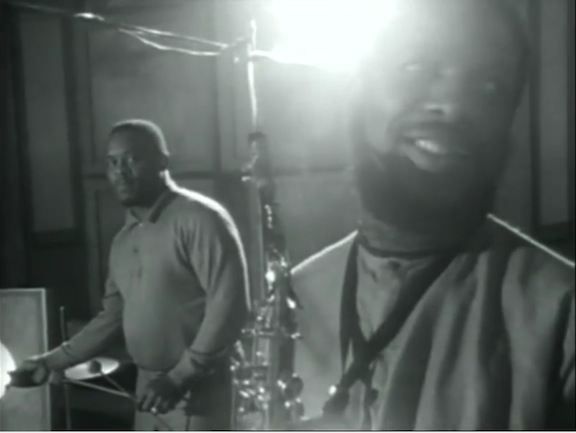 Fittingly, it was Ornette Coleman who, in a sense, led to the film’s rediscovery. As J. Hoberman recounted in the New York Times, after Coleman died last June [2015], Vanessa McDonnell, a 35-year-old Brooklyn-based filmmaker, film presenter at Spectacle, a Brooklyn collectively run screening space, and a contributing editor at Screen Slate, as well as a jazz fan, went looking for the film. She tracked down Tom White, and Who’s Crazy?
Fittingly, it was Ornette Coleman who, in a sense, led to the film’s rediscovery. As J. Hoberman recounted in the New York Times, after Coleman died last June [2015], Vanessa McDonnell, a 35-year-old Brooklyn-based filmmaker, film presenter at Spectacle, a Brooklyn collectively run screening space, and a contributing editor at Screen Slate, as well as a jazz fan, went looking for the film. She tracked down Tom White, and Who’s Crazy?
White told McDonnell that the Living Theater members were in the film because they, like various writers and artists, had taken to gathering in a courtyard beside White’s Montparnasse apartment. The players had staged a production – a “happening,” presumably — in Paris in late 1964. White interested them in being in his film at a time when founders Julian Beck and Judith Malina were back in the U.S. serving brief prison sentences for taxation shortcomings. The remaining members of the company had taken up residence in a North Sea farmhouse, and were cold, broke, and generally stoned.
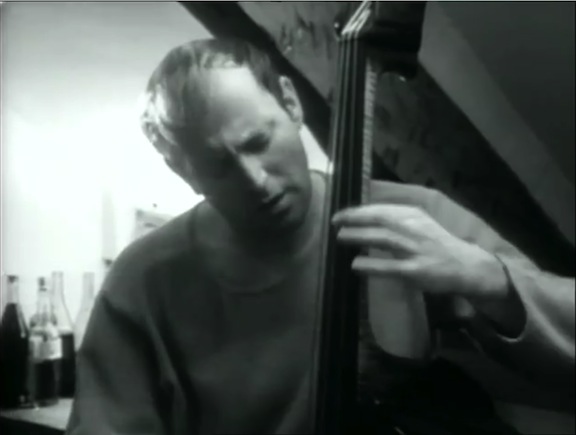 Thomas White told the New York Times that he shot the film in 10 to 12 days, and “nobody told [the actors] what to do.” As the Times describes it, “the performers engage in breathing exercises, dress up in funny hats, play instruments, mill around, stage group hugs, make a mess, cook food, play with candles, stare into one another’s eyes, break into primal screams, and declaim poetry in beatnik rants.”
Thomas White told the New York Times that he shot the film in 10 to 12 days, and “nobody told [the actors] what to do.” As the Times describes it, “the performers engage in breathing exercises, dress up in funny hats, play instruments, mill around, stage group hugs, make a mess, cook food, play with candles, stare into one another’s eyes, break into primal screams, and declaim poetry in beatnik rants.”
The Times’s J. Hoberman adds: “The polyrhythmic cascade of honks and squawks produced by Mr. Coleman, abetted by his sidemen — the bassist David Izenzon and the drummer Charles Moffett — imbue these activities with tremendous energy.”
Beck and Malina, liberated, returned to France late in 1965, the year the film was made, and told White they thought the film didn’t – as White recalled to Hoberman — reflect the Living Theater’s “energy vector.” White nonetheless premiered it at the 1965 Locarno film festival in Switzerland, but it bombed, so he decided to tighten it. The actors had improvised it from a 33-page scenario, and White had filmed nine hours that he pared down to an 80-minute cut. After Locarno, he cut it to 73 minutes. He also decided to add the soundtrack, and fortuitously he ran into Ornette Coleman who was on tour in Europe with his trio.
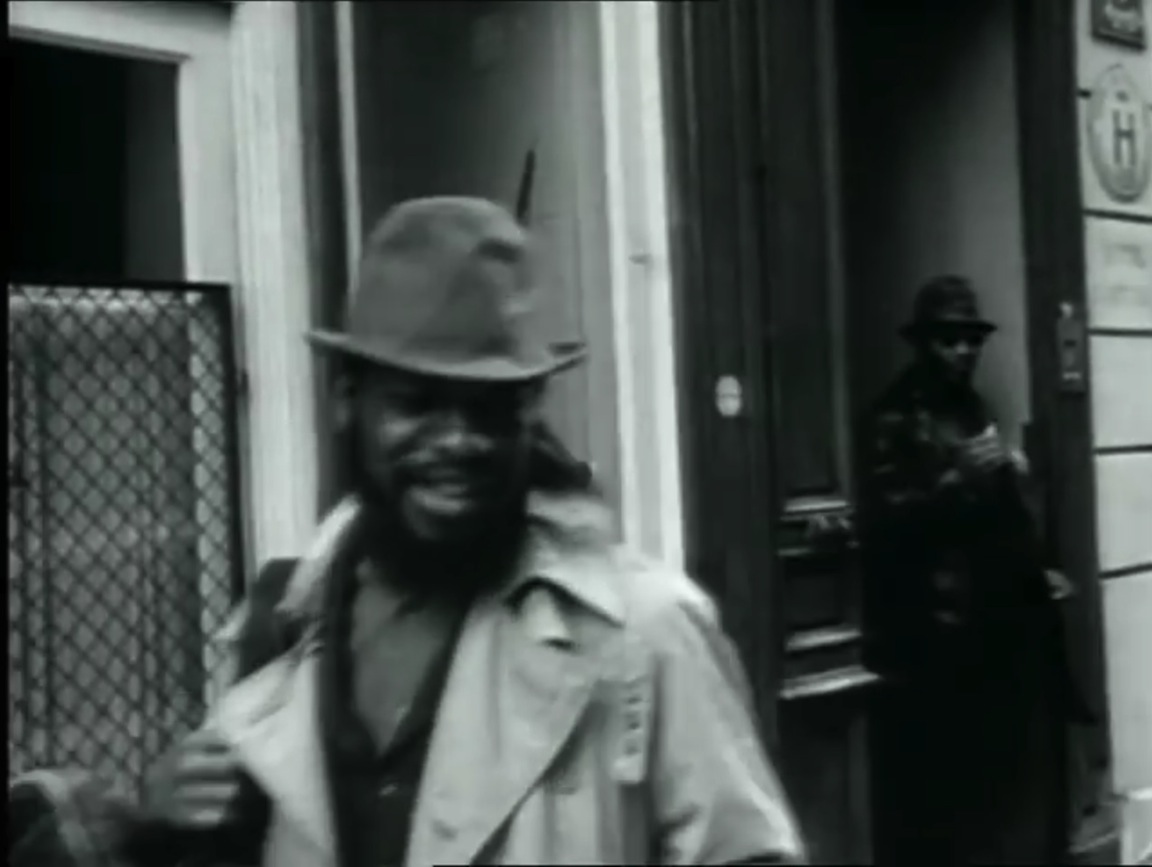 White took to the 1966 Cannes Festival the 35mm print that ended up gathering dust in White’s garage. He also showed it at the Cinémathèque Française. Hoberman writes that a potential London run came to nought, as did White’s hopes for American distribution, once he returned there in 1968 (and subsequently became an industrial filmmaker and film editor).
White took to the 1966 Cannes Festival the 35mm print that ended up gathering dust in White’s garage. He also showed it at the Cinémathèque Française. Hoberman writes that a potential London run came to nought, as did White’s hopes for American distribution, once he returned there in 1968 (and subsequently became an industrial filmmaker and film editor).
crazy people, crazy world
The film is a product of its age, contrarian in a way that still makes sense. The asylum inmates are on a bus outing when the vehicle breaks down, and they run off. They find a large, abandoned, rural house, and in their own necessarily shambolic way, set up a nonce society with its own institutions, exemplified by a marriage and a court in which they condemn one of their company.
They make their way to a farmhouse and there, as Richard Brody wrote in The New Yorker, “the actors’ grand improvisational antics mesh Mack Sennett style slapstick and psychodrama, costume parties and hectic chases, music-making and kangaroo courts, fiery alchemical experiments and primal quests for water. As love creeps in, the doings turn mock-solemn, with a wedding celebration staged as a threadbare rite of flung-together outfits and tinfoil décor.”
Eventually the cops come and break it up.
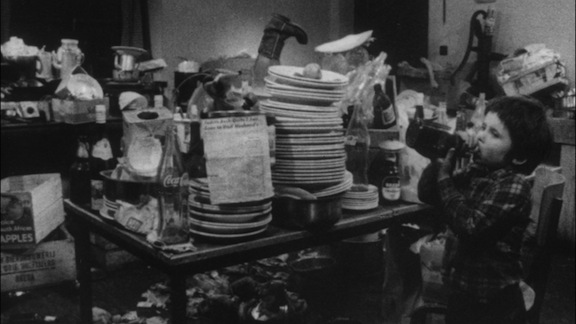
n
At the time of Who’s Crazy?’s release, White said of the film: “I wanted to make a musical tragedy as others make musical comedies. For this I reduced the dialogue to a strict minimum (I do not like talky films). … I wanted to pose the problem of the relativity of insanity. Released from constraint, the lunatics — so-called — organize themselves in a society which, to all irrational appearances, makes its own rules and falls near the mark of an organization at least as valid as that of a classic society.”
Salvador Dali paid it his highest compliment: “It’s almost Dalí.”
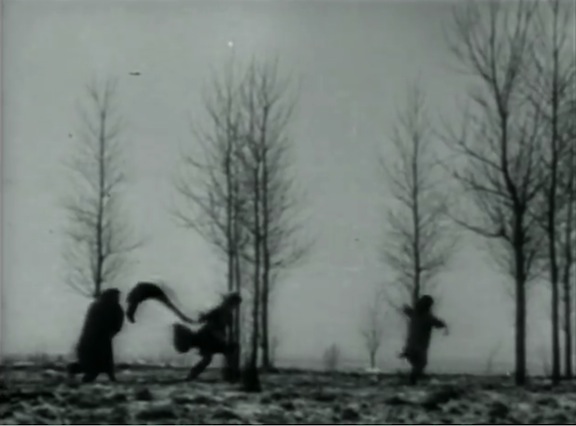
Ornette, getting away with being Ornette
White’s life was, by his own account, erratic, itself. Among his film experience was to have assisted Roger Vadim on the director’s Chateau en Suede (made in 1963, it was based on a work by Françoise Sagan, and its cast included Jean-Louis Trintignant and Françoise Hardy), and played a beatnik in The Sandpiper, a 1965 feature romantic drama that Vincente Minnelli made in Paris with Elizabeth Taylor and Richard Burton.
Not everyone has been as impressed with his capabilities as Salvador Dali was. Last week, Melissa Anderson in The Village Voice called Who’s Crazy? an “anarcho-regressed vision” and “proto-hippie curio with a sensational score by the Ornette Coleman Trio” but added: “The giddy, shambolic activity, certainly avant-garde, maybe even rejuvenating, during the LBJ era, made me restless and irritable during my first — and last — viewing of Who’s Crazy? a few weeks ago. White’s film might be most charitably thought of as a precursor to the lengthy radical-theater-rehearsal episodes in Jacques Rivette’s epic Out 1 (1971). But while watching Who’s Crazy? may prove exhausting, listening to it never does.”
At Cannes in 1966, Maurice Huleu of L’Espoir Who’s instantly dubbed “the craziest films of the festival.” White said, at the time, “my film will not make a commercial career, but one will be able to see it with profit in the art houses and you will see that in a few years it will be considered as the symbol of the times in which we are living.”
He was some years off in his count but perhaps, pace The Village Voice, correct nonetheless.
— Peter Monaghan
Previous Post: Reproducing Film Colors, and Their Significances
Next Post: How to Break into Movies — in 1907




